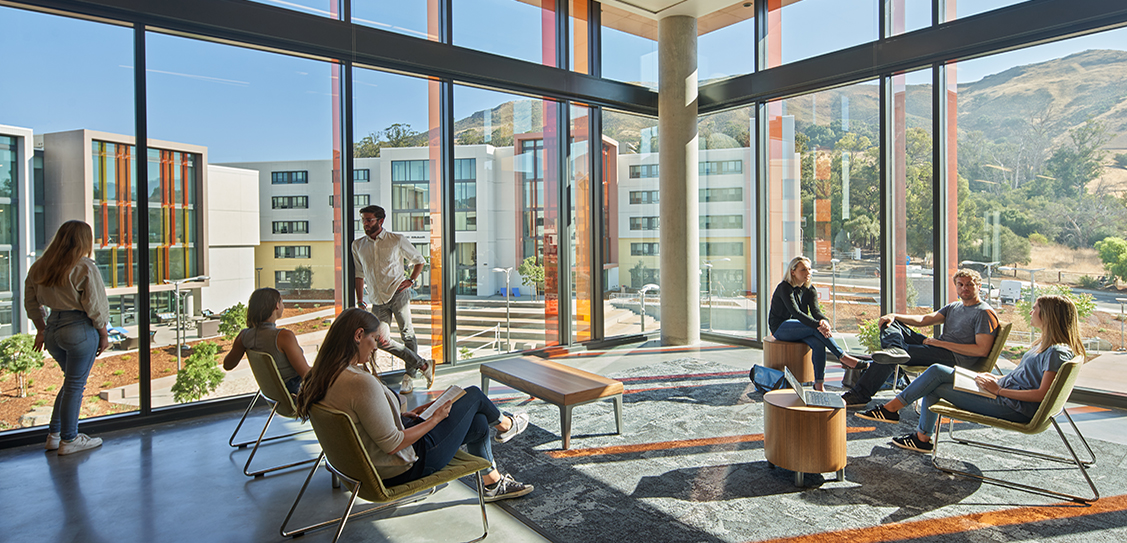Nestled on California’s central coast, Cal Poly’s new residential community for 1,475 first-year university students consists of seven three to five-story residence hall buildings, and an adjacent four-level parking structure. Valerio Dewalt Train designed the Cal Poly Student Housing South complex to encourage socialization among first-year college students, forming lasting bonds that will help them succeed in the rest of their time at university. There is a hierarchy of meeting spaces from large plazas, to quiet study rooms.
The living rooms are dedicated to communities of 50 students to encourage interaction. They open to the outdoor courtyards and circulation routes. Generously sized staircases foster spontaneous connections. A mailroom, a recreation center, offices, an admissions welcome center, and a food market wrap a structured student parking deck. A variety of outdoor spaces facilitate informal gathering, recreation, and contemplation.
To give students an even deeper sense of rootedness in the local landscape, the university partnered with the local natives - yak titʸu titʸu yak tiłhini - to provide direction for creating environmental wall art for each residence hall. The artwork tells the stories of the landscape of seven Northern Chumash villages along the Central Coast.
Interior wall art is painted on bare concrete walls to tell each building’s primary landscape story as well as several secondary stories that add depth. Within each building, every floor has its own artwork along the main interior circulation path. To tie together all of the wall art in a building, the design team created an abstract pattern for each residence hall, based on yak titʸu titʸu yak tiłhini basket patterns and integrated them as supporting elements. The environmental wall art for each residence rely on three colors, distinct for each building and chosen based on landscape colors that yak titʸu titʸu yak tiłhini associates with each village. Students from the university’s art department collaborated with a painter and used stencils to hand-paint the murals on the concrete.
As a result of the working relationship with the yak titʸu titʸu yak tiłhini, local plant species were also integrated into the landscape design, according to their recommendations. This was accompanied by localized signage, produced by the design team, that annotates and describes its tribal significance to incoming students. Before the work commenced, the yak titʸu titʸu yak tiłhini tribal team gathered with the design team for final review and approval of the wall art.
The goal is for students to discover and build connections, not only to their own residence hall, but also to the yak titʸu titʸu yak tiłhini people who have and will continue to live in this area for many generations, ultimately increasing students’ respect for the land and its ecosystems, for each other, and for the cultural heritage of the place they will call home.



